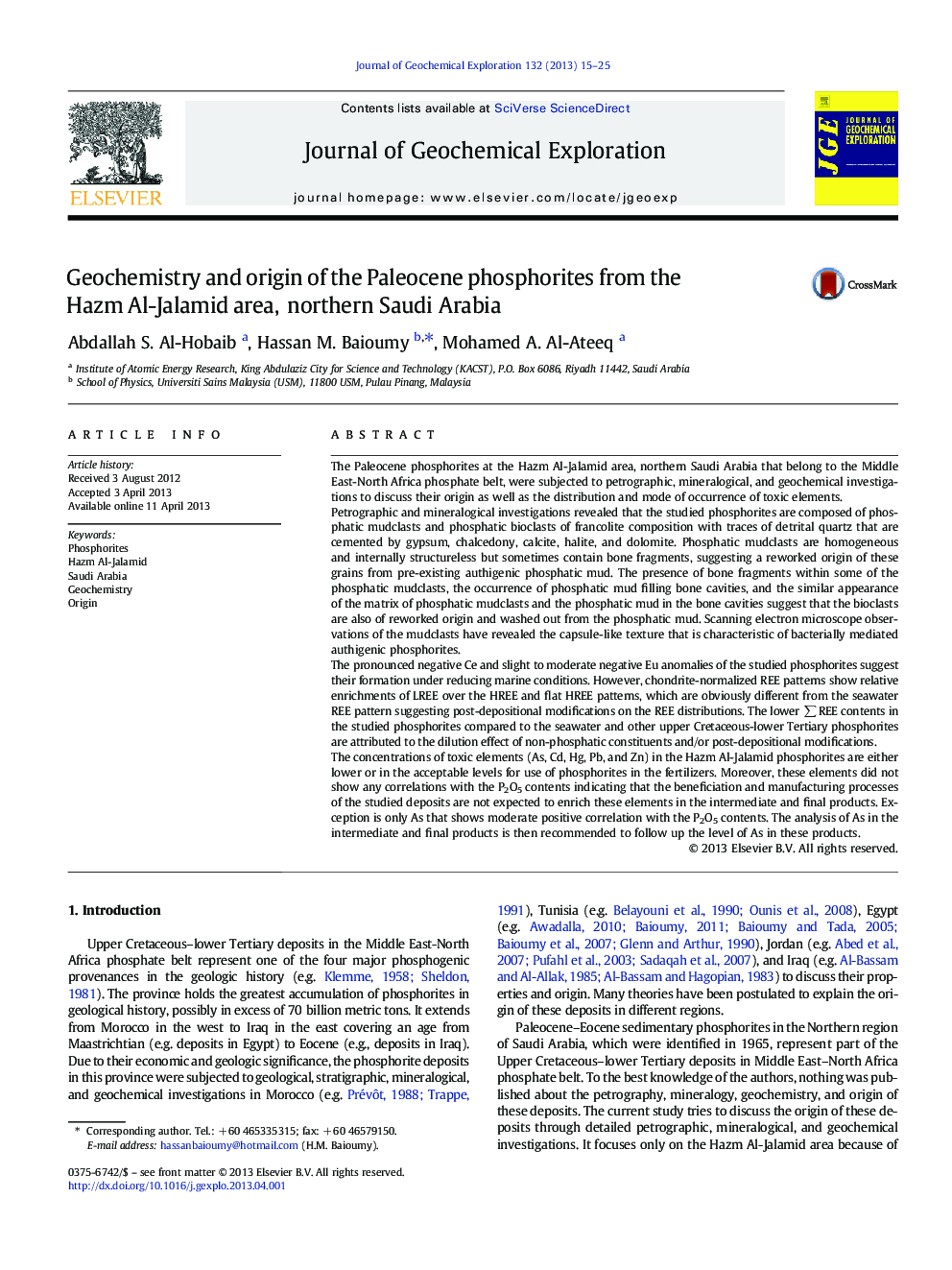| Article ID | Journal | Published Year | Pages | File Type |
|---|---|---|---|---|
| 4457471 | Journal of Geochemical Exploration | 2013 | 11 Pages |
•Phosphatic grains were reworked from a preexisting authigenic phosphatic mud.•REE patterns indicated reducing marine formational conditions of phosphatic grains.•Majority of REE occurs in the francolite crystal structure.•Low REE is mainly due to the dilution of non-phosphatic constituents.•Toxic element concentrations lie in the world phosphorite levels.
The Paleocene phosphorites at the Hazm Al-Jalamid area, northern Saudi Arabia that belong to the Middle East-North Africa phosphate belt, were subjected to petrographic, mineralogical, and geochemical investigations to discuss their origin as well as the distribution and mode of occurrence of toxic elements.Petrographic and mineralogical investigations revealed that the studied phosphorites are composed of phosphatic mudclasts and phosphatic bioclasts of francolite composition with traces of detrital quartz that are cemented by gypsum, chalcedony, calcite, halite, and dolomite. Phosphatic mudclasts are homogeneous and internally structureless but sometimes contain bone fragments, suggesting a reworked origin of these grains from pre-existing authigenic phosphatic mud. The presence of bone fragments within some of the phosphatic mudclasts, the occurrence of phosphatic mud filling bone cavities, and the similar appearance of the matrix of phosphatic mudclasts and the phosphatic mud in the bone cavities suggest that the bioclasts are also of reworked origin and washed out from the phosphatic mud. Scanning electron microscope observations of the mudclasts have revealed the capsule-like texture that is characteristic of bacterially mediated authigenic phosphorites.The pronounced negative Ce and slight to moderate negative Eu anomalies of the studied phosphorites suggest their formation under reducing marine conditions. However, chondrite-normalized REE patterns show relative enrichments of LREE over the HREE and flat HREE patterns, which are obviously different from the seawater REE pattern suggesting post-depositional modifications on the REE distributions. The lower ∑ REE contents in the studied phosphorites compared to the seawater and other upper Cretaceous-lower Tertiary phosphorites are attributed to the dilution effect of non-phosphatic constituents and/or post-depositional modifications.The concentrations of toxic elements (As, Cd, Hg, Pb, and Zn) in the Hazm Al-Jalamid phosphorites are either lower or in the acceptable levels for use of phosphorites in the fertilizers. Moreover, these elements did not show any correlations with the P2O5 contents indicating that the beneficiation and manufacturing processes of the studied deposits are not expected to enrich these elements in the intermediate and final products. Exception is only As that shows moderate positive correlation with the P2O5 contents. The analysis of As in the intermediate and final products is then recommended to follow up the level of As in these products.
